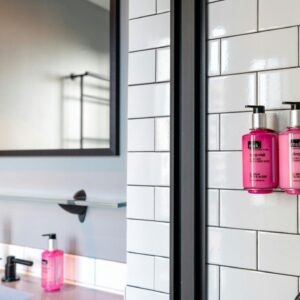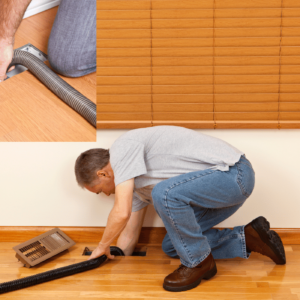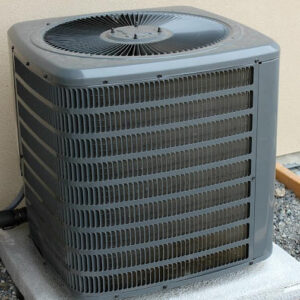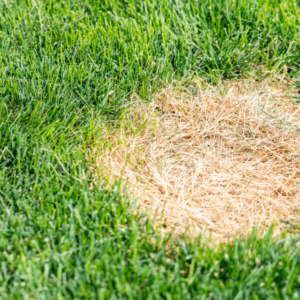Proper functioning of heating, ventilation, and air conditioning (HVAC) equipment is absolutely vital for maintaining a comfortable and healthy home environment. However, research shows that over 75% of homeowners pay minimal attention to their HVAC systems, only addressing issues when complete failures occur during extreme weather events. This negligent approach can decrease system efficiency by up to 25%, wasting substantial energy and money over months and years. By contrast, performing consistent yet simple periodic upkeep tasks and arranging annual professional tune-ups can dramatically optimize performance, extend equipment lifetime, improve air quality, and provide savings.
For homeowners considering new HVAC system installations or replacements, taking the time to carefully research and select an appropriately experienced and reputable contractor is a key investment that should not be underestimated. Rushing to choose the company with the lowest bid often leads to inferior equipment selection and installation quality, higher long-term operating costs, declines in indoor air quality, comfort issues from improperly sized systems, and even safety hazards from shoddy wiring or ductwork.
Properly Maintaining Existing HVAC Systems
Implementing basic maintenance best practices at home keeps HVAC systems operating properly in between the more thorough professional tune-ups. For forced air systems, homeowners should inspect and change out furnace filters at least every 1-2 months during seasons when actively heating or cooling. HVAC technicians can instruct homeowners on the proper MERV filter ratings and sizes specific to each system. Air filters remove particulate matter that would otherwise build up inside the equipment, degrade airflow, and even damage components.
The circulating fans in gas furnaces also need lubrication, typically with high-temperature motor oil, about once per year to prevent seizing up. Central air conditioners and heat pumps only require simple annual check-ups by a professional to examine belts, hoses, filters, wiring connections, drains, and lubricate any moving parts like fan bearings. Window-mounted or wall air conditioning units used in single rooms will benefit from seasonal attention at home – cleaning or replacing filters monthly, vacuuming debris from around external condenser units, and applying approved motor lubricant to fan shafts using the portals provided. Religiously adhering to the maintenance guidelines in equipment owner’s manuals preserves warranties.
In temperate or humid climates with more moderate seasonal temperature variations, heating and cooling systems often remain idle for prolonged intervals between winter and summer. Homeowners may consider briefly switching the system on for 10-15 minutes once monthly during off-seasons. This circulates lubricating oils and prevents mechanical seizures from inactivity. Programmable thermostats conveniently allow automation of this process if away from home.
Seeking Out Professional Tune-ups
While competent do-it-yourself homeowners can certainly perform basic upkeep tasks on their own, HVAC systems still require periodic tune-ups by licensed technicians at least annually for optimal efficiency and equipment longevity. During professional tune-ups, HVAC experts conduct far more thorough visual, mechanical, and electronic inspections using specialized diagnostic tools and testing equipment than a homeowner.
Filter replacements, cleaning out condensed debris from air ducts and pathways, ensuring proper refrigerant charge levels, lubricating motor and fan bearings, adjusting belts, calibrating thermistors and sensors, testing safety controls, measuring system operating pressures and air flows, checking for refrigerant leaks, and inspecting drain lines are just some standard practices during a typical tune-up. Advanced computerized diagnostics further identify specific components potentially needing service, repair, or replacement.
Scheduling tune-ups before seasonal changes when heating or cooling demands increase helps optimize performance and reduce costly emergency repairs from worn parts later. Calling early in fall or spring also provides maximum appointment flexibility when reputable HVAC companies are less overloaded and busy reacting to breakdowns during heat waves or cold snaps. Consistently using the same highly rated service provider over the years also brings technicians who become intimately familiar with a home’s equipment history and any existing issues to address – further optimizing reliability. While a professional tune-up may seem an unnecessary expense short term, the substantial long-term energy savings and extended equipment operational lifetime more than justify minor investments in preventative maintenance.
Vetting and Choosing Quality HVAC Service Companies
When selecting professional technicians and contractors for any level of job, homeowners and property owners must perform due diligence thoroughly vetting licenses, skills, experience levels, expertise with specific brands, and overall service reputation. Membership in respected industry associations like ACCA and NATE demonstrates up-to-date technical competency through continuing education on building codes, safety standards, and equipment best practices. 5-10 years in business histories provide some evidence of service quality. Checking reputable reviews on Google, Yelp and other sites gives further insights into recent customer satisfaction and contractor competency. 24/7 emergency availability with guaranteed response times also proves important should HVAC issues arise during nights, weekends, or holidays. Finally, always verify required liability insurance, workers’ compensation coverage, and bonding to minimize risks associated with entrance into private residences.
For the highest quality and most seamless service experience, homeowners should strongly consider full-service HVAC companies offering complementary in-house divisions handling equipment sales, custom HVAC system design, ductwork fabrication, installations, preventative maintenance plans, and emergency repair capabilities. Sales or estimator staff at such firms will also directly participate alongside technicians in performing site evaluations and inspections for accuracy. Generally, larger HVAC enterprises with a longer legacy prove better equipped with technical skills diversity, infrastructure capacity, and financial stability compared to very small operators or solo sole proprietors – despite claims of extensive experience.
New HVAC System Design and Installation Considerations
After 15-20 years of use, the energy efficiency of air conditioning units, furnaces, heat pumps, and distribution ductwork degrades substantially from buildups of dirt, debris, and mechanical wear – requiring replacement investments to regain savings from newer advanced technologies and system designs. Before proactively replacing older equipment based merely on age, however, homeowners can hire an HVAC technician to first evaluate components’ condition and remaining useful life, providing a professional heating and cooling assessment and recommendations addressing if replacement is truly justified versus continued repair. If the underlying issue proves to be inadequate maintenance, sometimes systems can keep operating economically for years longer with restored TLC.
When replacement proves necessary, a quality contractor will follow a systematic process for selecting appropriately sized and designed replacement systems tailored to the home, rather than arbitrarily installing something generic. Beginning with an energy audit-like detailed home assessment, HVAC experts will measure insulation levels, analyze envelope air leakage rates, assess ductwork design and sizing, quantify solar heat gain on exposures, and model localized weather patterns alongside family comfort preferences – calculating required cooling and heating capacity ranges for indoor spaces.
Sophisticated software applications combine collected data with supplemental simulations to determine the optimally sized system specifications for each zone in a home along with the equipment capabilities required. Right-sized systems provide maximum comfort and efficiency. Oversized equipment reduces system humidity control while causing short cycling that hampers efficiency. Dramatically undersized systems can never keep homeowners comfortable regardless of adjustments.
Designing correctly sized and zoned HVAC systems with ideal equipment selections requires an intimate understanding of building science – calculating heat gain/loss through various materials, balancing air flows across dwelling rooms, selecting refrigerant piping designs optimized for length and vibration, planning appropriate condensate drainage paths, and factoring humidification equipment into ventilation rates when needed… among countless other considerations. Reputable contractors determine replacement equipment specifications only after all these comprehensive quantitative analyses unique to each home. Basing selections merely on rules of thumb or what worked well for a neighbor often risks grossly improper installation and disappointing comfort or efficiency performance.
Seeking Multiple Bids with a Discerning Eye
Purchasing new HVAC equipment represents major home investments on par with kitchen remodels. Homeowners understandably seek cost savings through competitive bid processes. When reviewing proposals from multiple contractors, however, equipment and installation pricing should remain secondary concerns compared to system longevity, energy efficiency performance over decades, and overall home comfort. The objective focuses on quality and value rather than just short-term savings. Reputable consultants specify more sustainable high-efficiency products strategically matching equipment capabilities to calculated requirements. Discuss reviewing optimal brands exhibiting strong reliability track records. Confirm proposals and share modeling data justifying system sizing recommendations. If bids vary wildly in prices or technical specifics without clear explanations of divergent design methodologies, buyers should scrutinize approaches further through additional question-and-answer dialogues.
Savvy homeowners evaluating bids also consider total lifetime or lifecycle cost analysis projections provided by contractors rather than just upfront purchase outlays. Factoring in longer-term costs over years for energy bills, typical part replacements, maintenance, and average repair frequencies allows apples-to-apples comparisons on overall investments. Reputable companies gladly supply these projected operating cost calculations derived from modeling algorithms to demonstrate savings from more advanced system proposals.











Commented Posts